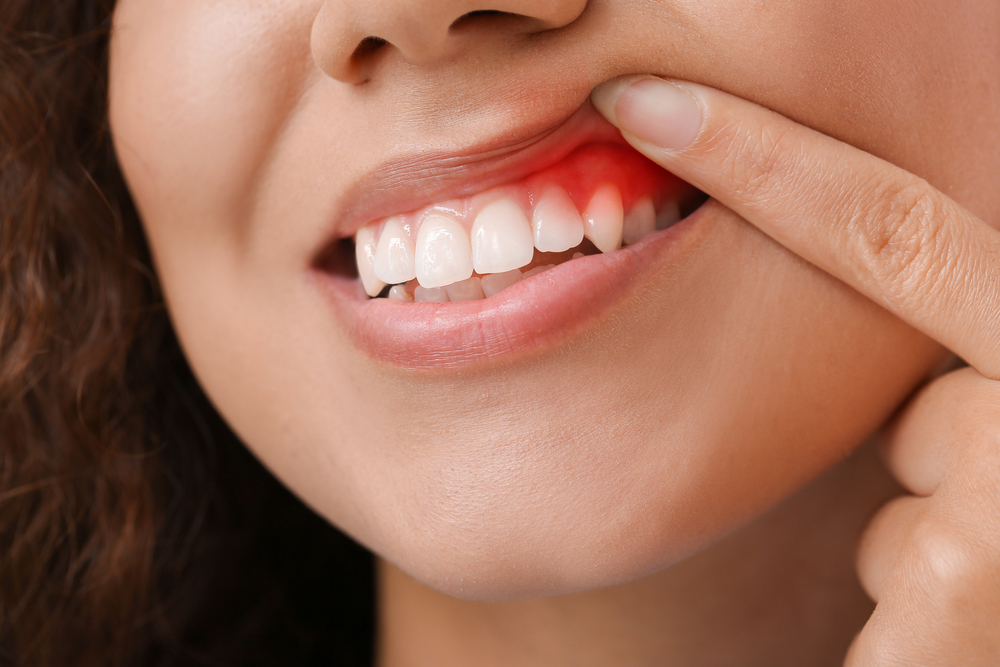Gum disease, also known as periodontitis, is a severe gum disease affecting over 7.4% of adults over 30 years in the United States and approximately 70% of people over 65 years. It is a bacterial infection that begins by inflaming the soft tissues surrounding the teeth. If left untreated, it can lead to tooth loss. Thankfully, gum disease is easily preventable and treatable! Read on to learn more about gum disease, and how to prevent it from reaching an advanced stage.
The Causes of Gum Disease
Bad dental hygiene is the number one cause of periodontal disease because the plaque and tartar buildup create a perfect environment for bacteria growth. The bacteria can also spread beneath the gum line, where a toothbrush or floss can’t reach. Regular cleanings with Dr. Koster will help prevent gum disease.
While it mostly affects people over 30, it can also affect younger people with the following risk factors:
- Smoking
- Sugary Foods
- Genetics and a periodontitis family history
The Symptoms of Gum Disease
With healthy gums, teeth should feel firmly in place, and gums should feel firm and painless. Those with gum disease may experience the following symptoms:
- Swollen and tender gums
- Purplish or reddish gums
- Pus or bleeding around the gumline
- Loose teeth
- Pain when chewing
- New spaces or gaps between the teeth
Consequences of Not Treating Gum Disease
While some symptoms are usually mild initially, they progress over time if you don’t visit your dentist immediately. The progression is usually gradual and happens in four stages:
Gingivitis
This is the early stage and what many people think about when they hear about gum disease. It is usually less serious than periodontal disease, causing the gums to become swollen and red. You may notice your gums bleeding when you brush your teeth. However, it does not cause bone loss around the teeth. It is usually reversible if you get professional teeth cleaning and maintain good oral hygiene, brushing, and flossing twice daily.
Slight Periodontal Disease
If you don’t treat gingivitis, it advances to mild periodontal disease, which causes your gums to pull away from the teeth. You also start experiencing bone loss around the teeth, resulting in periodontal pockets. Over time, plaque and tartar build up in those pockets, making it hard for your toothbrush or floss to reach.
Moderate Periodontal Disease
As the disease progresses, you lose more bone mass around the teeth, and the periodontal pockets increase. Bacteria also continue eroding the soft tissues and ligaments, supporting and keeping your teeth healthy. That causes increased tenderness and soreness, along with bad breath.
Advanced Periodontal Disease
At this stage, you experience severe bone loss. Bacterial infections spread deeper into the jaw, which causes your teeth to become loose, increasing the risk of falling out. You will also experience bleeding gums, infection, pain with chewing, and extreme sensitivity.
Gum Disease Diagnosis
Dr. Koster will conduct a thorough exam involving the following to determine if you have periodontal disease and its severity.
- Examining your medical history and symptoms
- Looking for signs of gum inflammation
- Using a periodontal probe to check for periodontitis pockets
- X-rays to see if there is bone loss
Gum Disease Treatments
In its most severe form, periodontitis is not reversible and must stick to a personalized treatment plus maintenance plan in order to prevent any further damage. After your examination, Dr. Koster will recommend a treatment option and plan depending on your periodontal disease severity:
- Scaling and root planing– a deep clean of the periodontal pocket
- Gum Grafting– rebuilding lost gum from other healthy mouth tissue
- Dental implants– replacement teeth
- Laser treatments– used to clean gum tissue faster
Get Gum Disease Treatment Today
Locust Valley Dentists is an award-winning cosmetic and general dental clinic offering unmatched dental services in Locust Valley, NY. Dr. Adrianne Koster is among the top New York dentists, using state-of-the-art equipment to diagnose and treat her patients with care, warmth, and attention to detail. Request your appointment online by completing the online contact form to keep your teeth healthy.

